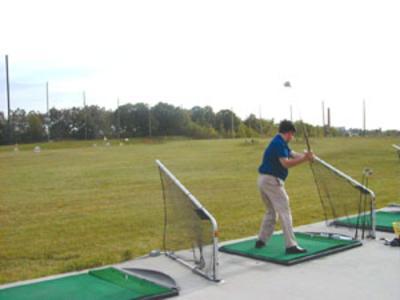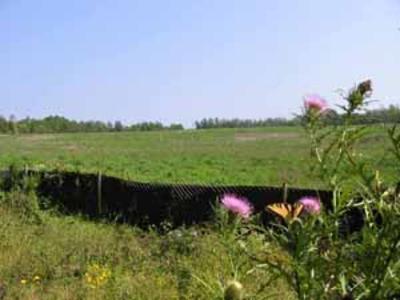Superfund Sites in Reuse in Maryland
If you are having trouble viewing the map in your browser, click the 'View larger map' link below
Chemical Metals Industries, Inc.
For more information:
Kane & Lombard Street Drums
 Kane & Lombard Street DrumsThe 10-acre Kane & Lombard Street Drums Superfund site is located at the corner of Kane and Lombard streets in Baltimore, Maryland. For more than 22 years, an open dump for disposing of demolition, municipal and industrial wastes operated at the site. Disposal activities resulted in the contamination of groundwater and soil at the site. At the request of the Maryland Department of the Environment (MDE), EPA investigated the site. In 1986, EPA added the site to the Superfund program’s National Priorities List (NPL). EPA worked closely with the local community, MDE, and a private investment group to design and implement a cleanup that allowed for the redevelopment of the property. As part of the site remedy, EPA removed drums of waste, installed a subsurface barrier to prevent further contamination of groundwater and constructed a permanent cap over contaminated soil. EPA also restricted land and groundwater use at the site to prevent exposure to contaminated soil and groundwater. Today, the property is home to a golf course driving range, a parking lot, a cellular telephone tower, a sea-land trailer repair facility and a trucking facility.
Kane & Lombard Street DrumsThe 10-acre Kane & Lombard Street Drums Superfund site is located at the corner of Kane and Lombard streets in Baltimore, Maryland. For more than 22 years, an open dump for disposing of demolition, municipal and industrial wastes operated at the site. Disposal activities resulted in the contamination of groundwater and soil at the site. At the request of the Maryland Department of the Environment (MDE), EPA investigated the site. In 1986, EPA added the site to the Superfund program’s National Priorities List (NPL). EPA worked closely with the local community, MDE, and a private investment group to design and implement a cleanup that allowed for the redevelopment of the property. As part of the site remedy, EPA removed drums of waste, installed a subsurface barrier to prevent further contamination of groundwater and constructed a permanent cap over contaminated soil. EPA also restricted land and groundwater use at the site to prevent exposure to contaminated soil and groundwater. Today, the property is home to a golf course driving range, a parking lot, a cellular telephone tower, a sea-land trailer repair facility and a trucking facility.
For more information:
Mid-Atlantic Wood Preservers, Inc.
The Mid-Atlantic Wood Preservers, Inc. Superfund site is located in Harmans, Maryland. The site operated as a wood treatment facility from 1974 until 1993. In 1978, site investigations found soil and groundwater contaminated with chemicals from wood-treating operations at the site. EPA added the site to the Superfund program’s National Priorities List (NPL) in 1986. In 1993, the site’s potentially responsible party conducted cleanup activities under EPA oversight. Cleanup activities included removing contaminated soil from a neighboring property and covering the entire 3-acre facility with an asphalt cap. In 1994, EPA entered into a Prospective Purchaser Agreement (PPA) with Gunther’s Leasing & Transport, a neighboring property owner. The PPA allowed Gunther’s to expand its operations and use part of the site as a parking lot and for office space. LMS, Inc. leases the former treatment building on site and operates a recreational boat repair shop. Several other firms lease portions of the buildings on site. Reuses include an indoor soccer facility, a trucking service and a limousine rental business parking area. EPA deleted the site from the NPL in 2000.
For more information:
Middletown Road Dump
The Middletown Road Dump Superfund site includes 15 acres of privately-owned land near Annapolis, Maryland. The site accepted rubble, construction debris, and municipal and industrial waste for several decades without proper state permits. A site inspection in 1981 shut down the dump after it found crushed and deteriorating drums, as well as debris, contaminated with hazardous substances. Investigations identified soil contamination at the site, which threatened groundwater and nearby surface water. EPA added the site to the Superfund program’s National Priorities List (NPL) in 1983. Cleanup activities included the removal and off-site disposal of drums, contaminated soil and debris. After completing cleanup activities, EPA deleted the site from the NPL in 1988. A private residence and a firewood supply business currently occupy the site.
For more information:
Ordnance Products, Inc.
The 95-acre Ordnance Products, Inc. Superfund site is located in the town of North East, Maryland. From 1960 until 1972, the site housed a manufacturing plant that produced ordnance products, such as grenade fuses and detonators. Site operators buried waste burned it in open pits or discharged waste into five unlined surface locations. These practices resulted in contamination of groundwater, soil, sediment and sludge. Investigations found site-related contamination in nearby residential drinking water wells. EPA placed the site on the Superfund program’s National Priorities List (NPL) in 1997. Cleanup included removal of hazardous materials and contaminated soil. Cleanup also included installing and maintaining treatment systems on affected residential groundwater wells to provide homes with safe drinking water. In 2012, EPA installed vapor intrusion mitigation systems at two houses. Currently, EPA is conducting a remedial action to address groundwater contamination, which will be completed by September 2015. A propane distribution facility currently operates at the site.
For more information:
Southern Maryland Wood Treating
 Southern Maryland Wood TreatingThe Southern Maryland Wood Treating (SMWT) Superfund site is located in Hollywood, Maryland. Wetlands cover most of the 94-acre site. From 1965 until 1978, wood-treating operations took place on 25 acres of the site. Site activities resulted in contamination of soil, groundwater and a stream adjacent to the site. In the early 1980s, site owners abandoned the site property, leaving processing equipment and deteriorating containers of chemicals on the property. The unaddressed, ongoing contamination, as well as the nearby residential wells, led EPA to place the site on the Superfund program’s National Priorities List (NPL) in 1986. EPA removed and heat treated contaminated soil and sediment to remove hazardous substances. EPA’s cleanup allows for unrestricted future use. In 2000 to 2001, EPA re-graded the site and planted a mix of wildflowers and grains to restore the site as a wildlife habitat. Groundwater monitoring ended in 2003. In 2004, the site became the first Superfund site to attain a Ready for Reuse Determination. EPA removed the site from the NPL in 2005. The Site has been cleaned to residential standards, but has not yet been redeveloped.
Southern Maryland Wood TreatingThe Southern Maryland Wood Treating (SMWT) Superfund site is located in Hollywood, Maryland. Wetlands cover most of the 94-acre site. From 1965 until 1978, wood-treating operations took place on 25 acres of the site. Site activities resulted in contamination of soil, groundwater and a stream adjacent to the site. In the early 1980s, site owners abandoned the site property, leaving processing equipment and deteriorating containers of chemicals on the property. The unaddressed, ongoing contamination, as well as the nearby residential wells, led EPA to place the site on the Superfund program’s National Priorities List (NPL) in 1986. EPA removed and heat treated contaminated soil and sediment to remove hazardous substances. EPA’s cleanup allows for unrestricted future use. In 2000 to 2001, EPA re-graded the site and planted a mix of wildflowers and grains to restore the site as a wildlife habitat. Groundwater monitoring ended in 2003. In 2004, the site became the first Superfund site to attain a Ready for Reuse Determination. EPA removed the site from the NPL in 2005. The Site has been cleaned to residential standards, but has not yet been redeveloped.
For more information:
- Southern Maryland Wood Treating Ready for Reuse Determination (2004) (PDF) (10 pp, 743 K, About PDF)
- Superfund Site Profile Page
Woodlawn County Landfill
The 37-acre Woodlawn County Landfill Superfund site is located in Cecil County, Maryland. The site operated as a sand and gravel quarry before Cecil County purchased it in 1960. The county operated a municipal landfill at the site from 1960 until 1978. Between 1978 and 1981, operators disposed of polyvinyl chloride industrial sludge at the site. Site operations resulted in contaminated groundwater, soil and sediments of a stream that crosses the site. EPA placed the site on the Superfund program’s National Priorities List (NPL) in 1987. Under EPA oversight, the site’s potentially responsible parties (PRPs) conducted cleanup of the site. Cleanup activities, completed in 2001, included placing a vegetative soil cover over the waste, monitoring the natural breakdown of groundwater contaminants and continued monitoring of surface water. The PRPs built the vegetative soil cover to support wildlife habitat and to continue to maintain the area as "New Beginnings, the Woodlawn Wildlife Habitat Area.” Local schools, the Boy Scouts and Girl Scouts of America, and the local community use the site for nature and science projects, environmental education and recreation. Long-term maintenance and monitoring continue at the site and show that the extent of groundwater contamination continues to decrease.
For more information:
